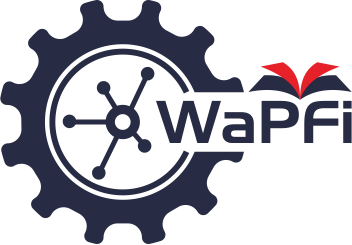Pengembangan tes diagnostik berbasis seamleap untuk mengidentifikasi keterampilan literasi sains pada materi gerak harmonis sederhana
Abstract
This research aimed to develop a two-tiers diagnostic test to measure high school students' level of scientific literacy skills in the topic of simple harmonic motion; and SeamLeap application as a digital-based learning evaluation medium. The research design conducted was a mixed-methods approach with an exploratory sequential method. The sample for this study was determined using purposive sampling technique, involving 52 students of XI IPA of a public high school in Bandung, divided into 21 participants for the limited test group and 31 participants for the large-scale test group. Additionally, one physics teacher from the same school was included in the study. During the development process, the SeamLeap-based diagnostic test received assessments from expert validators, resulting in 97% (deemed very feasible) for the media aspect, 87% (deemed very feasible) for the material aspect, and 92% (deemed very feasible) for the instrument aspect. The revised version from the developmental process was then implemented to measure students' level of scientific literacy skills in simple harmonic motion, revealing that the students’ scientific literacy skills generally achieved 51% or a moderate level. The characteristics of the diagnostic test instrument were analyzed using the Partial Credit Model (PCM). This analysis indicated that the test instrument was reliable for assessing students with abilities ranging from -3 to +3 (from very low to very high), and the majority of items fell within the range of -0.68 to 0.83, indicating a moderate level of difficulty. Furthermore, based on the questionnaire feedback from users, the SeamLeap application achieved a feasibility rating of 75% and 76% respectively, indicating that SeamLeap was suitable for use as a medium for physics learning evaluation.
Downloads
References
Adam, S., & Syastra, M. T. (2015). Pemanfaatan media pembelajaran berbasis teknologi informasi bagi siswa kelas X SMA Ananda Batam. Computer Based Information System Journal, 3(2).
Alami, N. F., Ramalis, T. R., & Sari, I. M. (2016). Profil keterampilan literasi sains siswa SMA berdasarkan Test of Scientific Literacy Skills (TOSLS) pada materi gerak melingkar beraturan. In Seminar Nasional Fisika (SiNaFi) 2016.
Arikunto, S., & Jabar, C. S. A. (2010). Evaluasi Program Pendidikan: Pedoman Teoretis Praktis bagi Mahasiswa dan Praktisi Pendidikan. Jakarta: PT Bumi Aksara.
Atmojo, T., Rochman, C., & Nasrudin, D. (2018). Profil literasi konsep fisika peserta didik pada Mitigasi Bencana hujan Es antapani. Jurnal Pendidikan Fisika, 6(2), 188-195.
Bichi, A. A., & Talib, R. (2018). Item Response Theory: An Introduction to Latent Trait Models to Test and Item Development. International Journal of Evaluation and Research in Education, 7(2), 142-151.
Danni, R., & Tauratiya, T. (2020). Analisis Kemampuan Berpikir Kritis Mahasiswa Program Studi Hukum Keluarga Islam IAIN Syaikh Abdurrahman Siddik Bangka Belitung. Tarbawy: Jurnal Pendidikan Islam, 7(1), 17-22.
Daud, A. M., Omar, J., Turiman, P., & Osman, K. (2012). Creativity in Science Education. Procedia—Social and Behavioral Sciences, 59, 467-474.
Edmonds, W. A., & Kennedy, T. D. (2017). An Applied Guide to Research Designs: Quantitative, Qualitative, and Mixed Methods. United Kingdom: SAGE Publications, Inc.
Ernawati, I. (2017). Uji kelayakan media pembelajaran interaktif pada mata pelajaran administrasi server. Elinvo (Electronics, Informatics, and Vocational Education), 2(2), 204-210.
Fatmawati, I. N., & Utari, S. (2015). Penerapan levels of inquiry untuk meningkatkan literasi sains siswa SMP tema limbah dan upaya penanggulangannya. Edusains, 7(2), 151-159.
Fitriani, L., Ramalis, T. R., & Efendi, R. (2019). Karakterisasi tes keterampilan proses sains materi fluida statis berdasarkan teori respon butir. Omega: Jurnal Fisika dan Pendidikan Fisika, 5(2).
Friyatmi, F. (2018). Estimasi parameter tes dengan penskoran politomus menggunakan graded response model pada sampel kecil. Jurnal Inovasi Pendidikan Ekonomi (JIPE), 8(1), 22-31.
Gormally, C., Brickman, P., & Lutz, M. (2012). Developing a Test of Scientific Literacy Skills (TOSLS): Measuring Undergraduates' Evaluation of Scientific Information and Arguments. CBE Life Sciences Education, 11(4), 364-377.
Karim, A. S., Sutedi, S., & Agarina, M. (2019, December). Prototype Development of Android-Based Thesis Information System at Institute Informatics and Business (IIB) Darmajaya Bandar Lampung. In Proceeding International Conference on Information Technology and Business (pp. 122-132).
Kirschner, P. A., & Stoyanov, S. (2020). Educating youth for nonexistent/not yet existing professions. Educational Policy, 34(3), 477-517.
Kulsum, F., Rochman, C., & Nasrudin, D. (2017). Profil Literasi Sains Peserta Didik Pada Konsep Pembangkit Listrik Tenaga Air (Plta) Cirata Di Kabupaten Cianjur Jawa Barat. Jurnal Wahana Pendidikan Fisika, 2(1), 15-19.
Lazareska, L., & Jakimoski, K. (2017). Analysis of the advantages and Disadvantages of Android and iOS Systems and Converting Applications from Android to iOS Platform and Vice Versa. American Journal of Software Engineering and Applications, 6(5), 116-120.
Lusiyani, R., & Anindya, W. D. (2021). Choosing and Using Learning Media during Remote Teaching: Teachers' Thoughts. JELTL (Journal of English Language Teaching and Linguistics), 6(2), 407-423.
Mahnun, N. (2012). Media Pembelajaran: Kajian terhadap Langkah-langkah Pemilihan Media dan Implementasinya dalam Pembelajaran. Jurnal Pemikiran Islam, 37(1), 27-35.
Malgaonkar, S., dkk. (2015). A Review and Basic Guidelines on Developing Android Applications. International Journal of Computer Applications, 132(3), 42-49.
Mansur, H., & Utama, A. H. (2021). The Evaluation of Appropriate Selection Learning Media at Junior High School. Indonesian Journal of Instructional Media and Model, 3(1), 17-25.
Memon, dkk. (2020). Sample Size for Survey Research: Review and Recommendations. Journal of Applied Structural Equation Modeling, 4(2), 1-20.
Mutmainna, D., Mania, S., & Sriyanti, A. (2018). Pengembangan instrumen tes diagnostik pilihan ganda dua tingkat untuk mengidentifikasi pemahaman konsep matematika. MaPan, 6, 56-69.
Nasukha Z, N. Z. (2020). Modul pembelajaran SMA fisika Kelas X: getaran harmonis.
Noprianti, E., & Utami, L. (2017). Penggunaan two-tier multiple choice diagnostic test disertai cri untuk menganalisis miskonsepsi siswa. JTK (Jurnal Tadris Kimiya), 2(2), 124-129.
Putri, D. A. K., Ramalis, T. R., & Purwanto, P. (2018). Pengembangan tes kemampuan literasi sains pada materi momentum dan impuls dengan Analisis Item Response Theory (IRT). Jurnal Riset Dan Kajian Pendidikan Fisika, 5(1), 40.
Rahma, F. A., Harjono, H. S., & Sulistyo, U. (2023). Problematika Pemanfaatan Media Pembelajaran Berbasis Digital. Jurnal Basicedu, 7(1), 603-611.
Retnawati, H. (2014). Teori Respon Butir dan Penerapannya untuk Peneliti, Praktisi Pengukuran dan Pengujian, dan Mahasiswa Pascasarjana. Yogyakarta: Nuha Medika.
Rohman, S., Rusilowati, A., & Sulhadi, S. (2017). Analisis pembelajaran fisika kelas x sma negeri di kota cirebon berdasarkan literasi sains. Physics Communication, 1(2), 12-18.
Rusnayati, H., Danawan, A., Novia, H., & Ardi, N. D. (2022). Penerapan media interaktif quizizz terhadap pemahaman konsep siswa kelas 8 dalam pembelajaran pesawat sederhana. In Prosiding Seminar Nasional Fisika (Vol. 1, No. 1, pp. 108-114).
Schrepp, M., Hinderks, A., & Thomaschewski, J. (2017). Construction of a Benchmark for the User Experience Questionnaire (UEQ). Int. J. Interact. Multim. Artif. Intell., 4, 40-44.
Setiani, N. W., & Suyitno, A. (2021). Kemampuan membaca data dan rasa ingin tahu siswa terhadap kemampuan literasi statistik. QALAMUNA: Jurnal Pendidikan, Sosial, dan Agama, 13(2), 257-270.
Shaffer, J. F., Ferguson, J., & Denaro, K. (2019). Use of the test of scientific literacy skills reveals that fundamental literacy is an important contributor to scientific literacy. CBE Life Sciences Education, 18(3), 1–10.
Singh, A., Sharma, S., & Singh, S. (2016). Android Application Development using Android Studio and PHP Framework. International Journal of Computer Applications, 975(8887), 5.
Sıbıç, O., Akcay, B., & Arık, M. (2020). Review of Two-tier Tests in the Studies: Creating a New Pathway for the Development of Two-tier Tests. International Journal of Contemporary Educational Research, 7(2), 81-98.
Sumintono, B., & Widhiarso, W. (2015). Aplikasi Pemodelan Rasch pada Assessment Pendidikan. Cimahi: Penerbit Trim Komunikata.
Suarsih, A., Arnyana, I. B. P., & Ardana, M. (2020). Pengembangan Instrumen Hasil Belajar Matematika dan Kecemasan Belajar Siswa Kelas IV Gugus III Abiansemal Tahun Ajaran 2019/2020. Jurnal Penelitian Dan Evaluasi Pendidikan Indonesia, 10(1), 41-50.
Tafonao, T. (2018). Peranan media pembelajaran dalam meningkatkan minat belajar mahasiswa. Jurnal komunikasi pendidikan, 2(2), 103-114.
Tiwari, A. (2017). Comparative Analysis of Smartphone Operating System: Android, Apple iOS, and Windows. International Journal of Advance Research in Science and Engineering (IJARSE), 6(10), 35-41.
Utami, R. D., Agung, S., & Bahriah, E. S. (2017). Analisis pengaruh gender terhadap miskonsepsi siswa sman di kota depok dengan menggunakan tes diagnostik two-tier. In Prosiding Seminar Nasional Pendidikan FKIP (Vol. 1, No. 2).
Wardani, R. K., Yamtinah, S., & Mulyani, B. (2015). Instrumen Penilaian Two-Tier Test Aspek Pengetahuan Untuk Mengukur Keterampilan Proses Sains (Kps) Pada Pembelajaran Kimia Untuk Siswa Sma/Ma Kelas X. Jurnal Pendidikan Kimia, 4(4), 156-162.
Zaleha, Z., Samsudin, A., & Nugraha, M. G. (2017). Pengembangan instrumen tes diagnostik VCCI bentuk four-tier test pada konsep getaran. J. Pendidik. Fis. dan Keilmuan, 3(1), 36-42.






